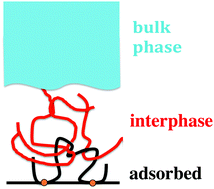Polymer dynamics under confinement
Abstract
We review recent neutron scattering work and related results from simulation and complementary techniques focusing on the microscopic dynamics of polymers under confinement. Confinement is either realized in model porous materials or in polymer nanocomposites (PNC). The dynamics of such confined polymers is affected on the local segmental level, the level of entanglements as well as on global levels: (i) at the segmental level the interaction with the surface is of key importance. At locally repulsive surfaces compared to the bulk the segmental dynamics is not altered. Attractive surfaces slow down the segmental dynamics in their neighborhood but do not give rise to dead, glassy layers. (ii) Confinement generally has little effect on the inter-chain entanglements: both for weakly as well as for marginally confined polymers the reptation tube size is not changed. Only for strongly confined polymers disentanglement takes place. Similarly, in PNC at higher NP loading disentanglement phenomena are observed; in addition, at very high loading a transition from polymer caused topological constraints to purely geometrical constraints is observed. (iii) On the more global scale NSE experiments revealed important information on the nature of the interphase between adsorbed layer and bulk polymer. (iv) Polymer grafts at NP mutually confine each other, an effect that is most pronounced for one component NP. (v) Global diffusion of entangled polymers both in weakly and strongly attractive PNC is governed by the ratio of bottle-neck to chain size that characterizes the ‘entropic barrier’ for global diffusion.

- This article is part of the themed collection: Soft Matter 15th Anniversary Perspectives


 Please wait while we load your content...
Please wait while we load your content...